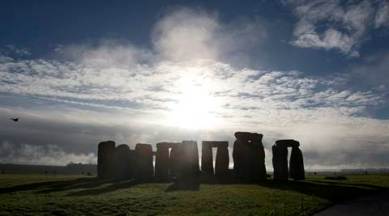Stay updated with the latest - Click here to follow us on Instagram
Archaeologists discover 4,500 year old ‘superhenge’ that dwarfs Stonehenge
The fragments of more buried stones, or the massive foundation pits in which they stood, show the full extent of the monument.

Researchers have discovered what may be the largest surviving Neolithic stone monument in the UK – an enormous ‘superhenge’ with as many as 100 large standing stones – about three kilometres away from the famous Stonehenge.
The remains of the stone monument are buried under a thick, grassy bank and are thought to have been hauled into position more than 4,500 years ago.
monthly limit of free stories.
with an Express account.
The hidden arrangement of nearly 100 huge standing stones formed part of a C-shaped Neolithic arena that bordered a dry valley and faced directly towards the river Avon.
Researchers used ground-penetrating radar to image about 30 intact stones measuring up to 4.5 metres tall.
The fragments of more buried stones, or the massive foundation pits in which they stood, show the full extent of the monument, the Guardian reported.
“What we are starting to see is the largest surviving stone monument, preserved underneath a bank, that has ever been discovered in Britain and possibly in Europe,” said Vince Gaffney, an archaeologist at Bradford University who leads the Stonehenge Hidden Landscape project.
The recumbent stones were lost beneath a huge bank and were incorporated as a somewhat clumsy linear southern border to the otherwise circular “superhenge” known as Durrington Walls.
Over one and a half kilometres in circumference, Durrington Walls is one of the largest known henge monuments. It is surrounded by a ditch and a 40 metre-wide, one metre-tall outer bank.
The stones are believed to have formed the southern edge of a ritual arena centred on a natural depression.